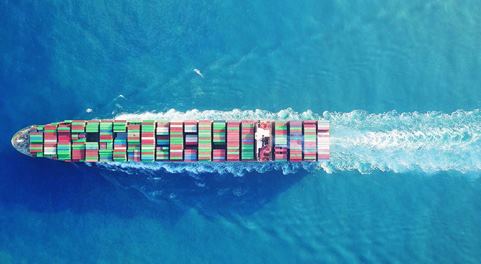Updates on The EU Emissions Trading System
To accelerate the transition towards a net-zero emission transportation sector, the EU is implementing a number of regulatory initiatives that will increase the cost of CO2 emissions in transport.

Understanding the EU Emissions Trading System
Established in 2005, the EU ETS is a cap-and-trade scheme that has now been extended to the shipping industry. It is central to the EU’s strategy to reduce CO2 emissions and sets a maximum allowance for the total amount of greenhouse gases that may be emitted by companies inside the EU in a given year. Companies subject to EU ETS have to buy allowances based on the amount of greenhouse gases they emit.The number of allowances available EU-wide will decrease every year, driving the total emissions of greenhouse gases down towards the 2030 and 2050 targets.
Implementation
In Q4 2022, the European Parliament decided to establish the EU ETS system for the shipping industry by 1 January 2024. This will be implemented as follows:
- In 2024, companies must submit allowances for 40% of their verified emissions.
- In 2025, companies must submit allowances for 70% of their verified emissions.
- From 2026 onwards, companies must submit allowances for 100% of their verified emissions.
Application
The ETS will apply to all maritime services with at least one call within the EU. 100% of emissions will be considered for legs between two EU ports, while 50% of the emissions will be considered for legs between EU ports and non-EU ports.
At this point, long-term costs are difficult to estimate, as many factors will affect the future price of CO2-emission allowances traded within the EU ETS.
At DSV, we are committed to keeping you informed about significant developments in the transport and logistics industry that may impact your business.
Thank you for your continued support and understanding as we work together towards a more sustainable future for transport and logistics.
1. How does the EU ETS impact the shipping industry?
Companies in the shipping industry will be required to submit allowances for a percentage of their verified emissions, with the percentage increasing annually until 100% of their verified emissions are covered from 2026 onwards. The ETS will apply to all maritime services with at least one call within the EU, with different percentages of emissions considered for different legs of the journey.
2. How will the EU ETS impact the cost of CO2 emissions in transport?
The EU ETS will increase the cost of CO2 emissions in the transport sector by requiring companies to buy allowances based on the amount of greenhouse gases they emit. As the number of allowances available EU-wide decreases every year, it will drive the total emissions of greenhouse gases down towards the 2030 and 2050 targets.
3. When will the EU ETS be implemented for the shipping industry?
The European Parliament decided to establish the EU ETS system for the shipping industry by 1 January 2024. The implementation will involve companies submitting allowances for a percentage of their verified emissions, with the percentage increasing annually until 100% of their verified emissions are covered from 2026 onwards.
4. Does it only cover countries in EU?
The ETS will apply to all maritime services with at least one call within the EU. 100% of emissions will be considered for legs between two EU ports, while 50% of the emissions will be considered for legs between EU ports and non-EU ports.

5. What is the difference between DSV Environmental Fee and the EU ETS cost?
DSV Environmental Fee is implemented on our air and sea transportation services, as part of our ongoing efforts to support environmental sustainability. By introducing the Environmental Fee, DSV aims to reduce carbon footprint, support more sustainable practices and further green technology. The EU Emissions Trading System is a regulatory initiative established by the EU, aiming to reduce CO2 emissions in the transport sector and contribute to the EU's overall target of reducing net greenhouse gas emissions, ultimately leading to climate neutrality by 2050. Companies subject to EU ETS have to buy allowances based on the amount of greenhouse gases they emit.
| DSV Environmental Fee | EU ETS Cost | |
| Initiated by | DSV | The EU |
| Scope | Air & sea transportation services for all origins & destinations | Maritime services with at least one call within the EU |
| Aim | To reduce carbon footprint, support more sustainable practices and further green technology via DSV’s initiatives | To reduce CO2 emissions in the transport sector and contribute to the EU's overall target of reducing net greenhouse gas emissions, ultimately leading to climate neutrality by 2050 |
6. How can DSV support my business in the transition to a greener future?
As EU regulation increases cost of CO2 emissions in transport, we expect an even stronger focus on CO2 reduction possibilities from our customers. DSV's Green Logistics services provide a set of solutions to help our customers reduce their CO2 emissions.
Green logistics
Let’s trade on nature’s terms. We can help you reduce the carbon footprint of your supply chain

Any questions?
Our experts are ready to help. Get in touch and we'll find the solution you need.


